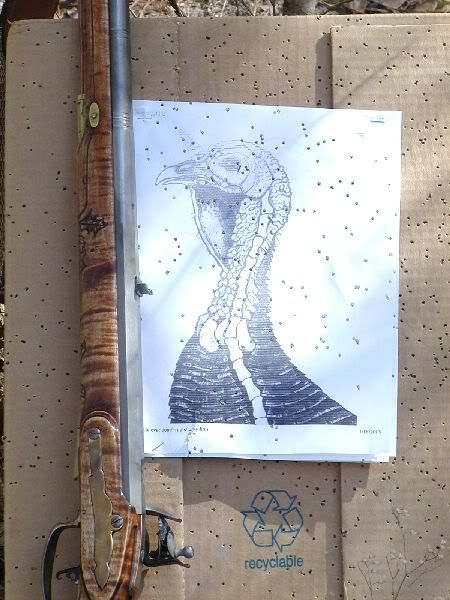i would like to caution against guns that have painfull shooting problems.. in shotgun sports or hunting this can be the downfall of the average shooter.. the jerk, the flinch, the eyes shutting, turning or lifting of the head, the stopping of the follow thru are just some of the symptoms that will plague the shotgun shooter, complicated and spurred on by pain.. A beginner must have a gun that feels good, and puts the shot in the right spot with the correct density for the job for good results and proper learning.. gun weight, butt width and design, pitch (angle of the butt end) comb height and angle, and cast off problems are some of the things that contribute to pain in shotgun shooting.. this is another reason for a quality gun, built or desinged by knowledgabel shotgunsmiths.. it does not take alot power to break a clay, or kill a bird.. it does take an accurate shot and a decent pattern with the right sized shot going at an apropriate velocity.. smaller guns need good patterns but the diameter of the pattern is smaller, the densisty doesnt need to be more.. a turkeys head and neck is small, so a 20 guage with accurate shot and dense pattern will kill a turkey at the same range that a 8 guage will with the same density.. density would be the number of pellets in a square foot.. usually larger guages will be set for the same density for the job but give a larger pattern, especially for moveing targets.. personally i think the big gauges will cause more problems than they will help.. before some one calls fowel, i would like to mention that ive won two montana state muzzeloading championships with a 10 guage.. .. it took tremendous work to get it to work properly with 1 1/8 ounce shot.. the short shot column tended to tip without figuring out that i had to lenghten the wads to stop occasional tipping.. . i also had gas sealing problems be couse the average nitro card (from the old circle fly co.) were not of large enough diameter to take the pressures i was developing.... it worked fine after alot of messing around.. .. another point, as patterns get dense from more shot/less powder loads, the velocity decreases, which is not a problem with turkey, becouse the head is volnurable.. But the only way to compensate on tough birds in cold weather with heavey plumage is with larger shot.. with very dense patterns you can get wing breakage, but without a followup shot or without a dog your bird will be gone when it hits the ground.. so a decent velocity , medium to little largeer than normal shot size for pennetration into the vitals with a body shot, with a decent pattern is the best way to go for moveing targets like ducks or pheasant..remember a fair number of these shots will be into the butt.. This agiain would be in a gun that the shooter can handle and in a weight that the shooter can carry for several hours, or more, in the field, maybe after driving for several hours to get to the hunting spot, and after a short nights rest, gettin up very early to reach an area at dawn.... in my opinion a smooth bore flinter with average caliber, of avereage weight, 36-44 inch barrel, and a good military style lock with large flint in a quality desinged gun will serve the shooter well (without pain) for all game from deer to pheasant to duck to turkey.. a 16 gauge, .69 cal, 8 1/2 pound gun with 42 inch barrel is right in the center of all this.. and there is absolutly nothing wrong with a 20 or 12.. .. a 10 will work fine but weight must definitly be more, and proper design and an expereinced shotgunner will be importnat... 10 guage is not a beginners gun in my opinion.. the bess could be an exception if it is loaded properly for the beginner..there would be alot of guys here that would be able to help a newby bess shooters with pheasant, turkey, deer.. heaven knows ill get fried if i dont bring up the redcoats.

eace: good luck to you all.. dave





